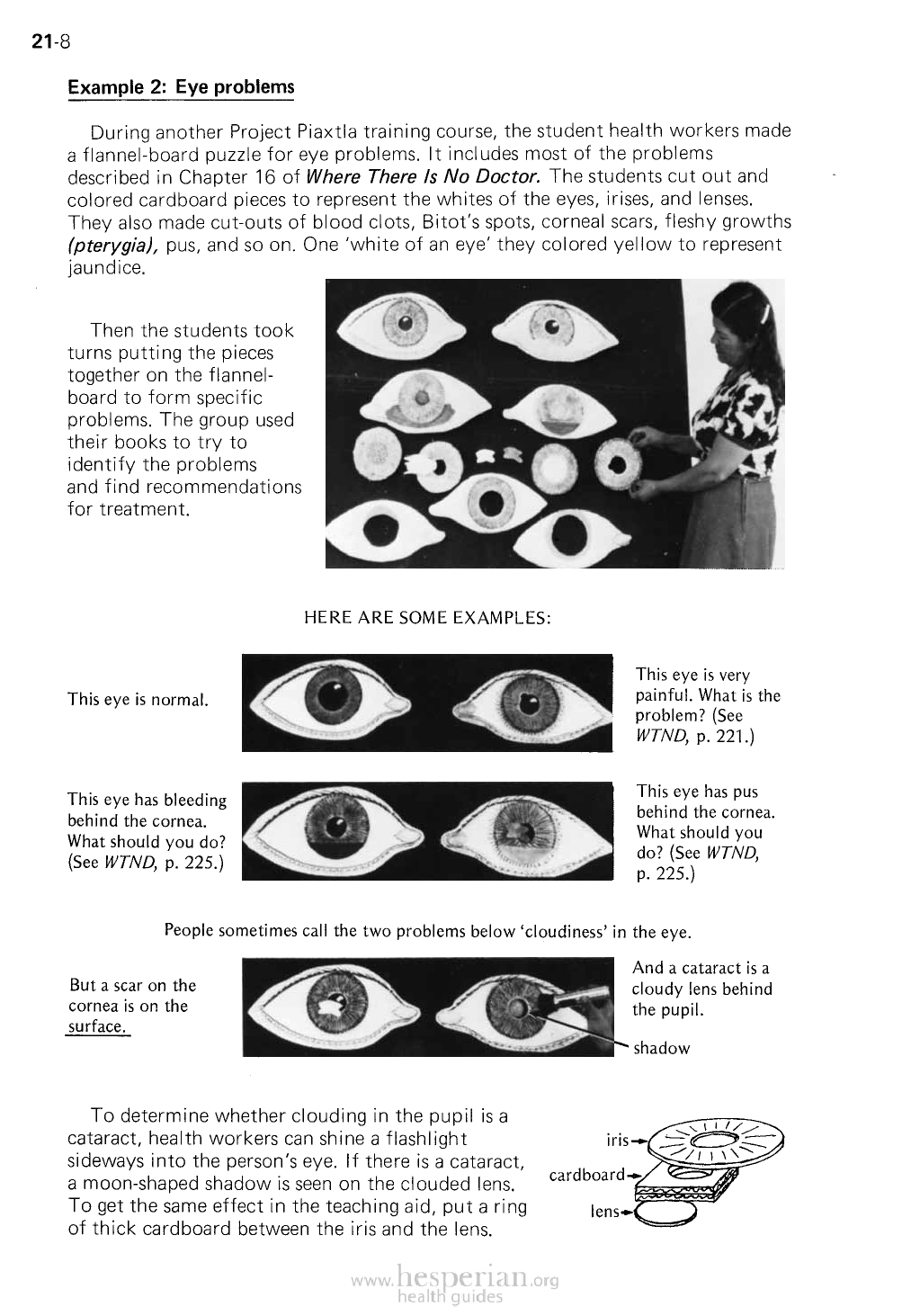
21-8
Example 2: Eye problems
During another Project Piaxtla training course, the student health workers
made a flannel-board puzzle for eye problems. It includes most of the problems
described in Chapter 16 of Where There Is No Doctor. The students cut out
and colored cardboard pieces to represent the whites of the eyes, irises, and
lenses. They also made cut-outs of blood clots, Bitot’s spots, corneal scars, fleshy
growths (pterygia), pus, and
so on. One ‘white of an
eye’ they colored yellow to
represent jaundice.
Then the students took
turns putting the
pieces together
on the flannel-
board to form specific
problems. The group
used their books to try to
identify the problems and
find recommendations for
treatment.
HERE ARE SOME EXAMPLES:
This eye is normal.
This eye is very
painful. What is
the problem? (See
WTND, p. 221.)
This eye has bleeding
behind the cornea.
What should you do?
(See WIND, p. 225.)
This eye has pus
behind ihe cornea.
What should you
do? (See WTND,
p. 225.)
People sometimes call the two problems below ‘cloudines’ in the eye.
But a scar on the
cornea is on the
surface.
And a cataract is a
cloudy lens behind
the pupil.
shadow
iris
To determine whether clouding in the pupil is
cardboard
a cataract, health workers can shine a flashlight
lens
sideways into the person’s eye. If there is a cataract, a
moon-shaped shadow is seen on the clouded lens. To get the same effect in the
teaching aid, put a ring of thick cardboard between the iris and the lens.